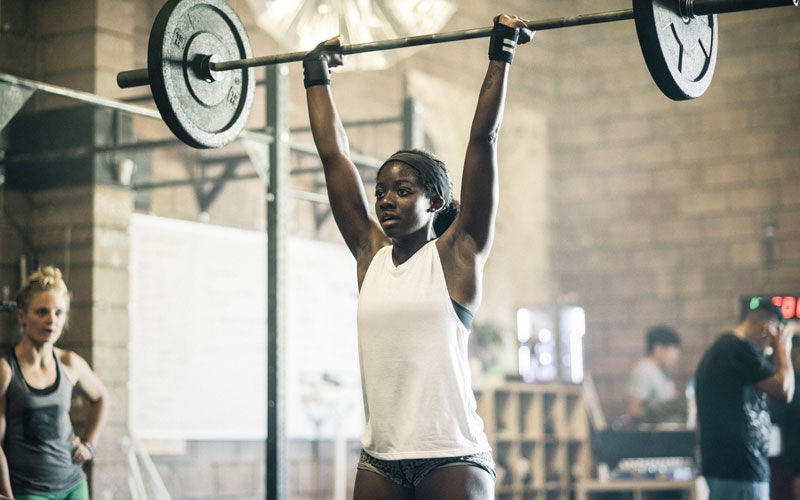Speed, strength, or stamina: Learn more about the 3 muscle fiber types that make our bodies move
 ©Cecilie_Arcurs
©Cecilie_Arcurs
Sprinters, long-distance runners, weightlifters, triathletes – it’s all a matter of which muscle fiber types are most prevalent in each person’s individual body. Find out more about the different kinds and what you can (and can’t) achieve through targeted training.
What are muscle fibers?
The human body consists of more than 650 muscles: Our smooth muscles, which we cannot control, work in the background to keep our organs functioning. We can, however, control striated muscles, which are also known as skeletal muscles. We can consciously flex and relax our skeletal muscles for every movement they make – whether it’s holding a fork, turning over in our sleep, or doing exercise.

By the way, the heart is also made of skeletal muscle, but – as you might realize – it’s not under your conscious control and is regulated separately.
Skeletal muscles consist of individual muscle strands that are enclosed by fascial tissue. These strands in turn are composed of a bundle of muscle fibers.
The building blocks of muscle fibers are proteins that form so-called filaments, which are structures of varying volume that move during muscle activity. For example, if you tense your biceps, the filaments slide into each other to shorten them. These muscle contractions allow you to move your body, do a push-up, or run a marathon.
Proteins are the building blocks of your muscle fibers. It’s not without reason that you, especially as a strength athlete, should rely on a protein-rich diet. Our Whey Protein, for example, provides support for strong muscles and a powerful workout – and it comes in lots of delicious flavors.
What types of muscle fibers are there?

Basically, there’s two or three different kinds of muscle fibers.
- Muscle fiber type I (slow twitch or ST fibers)
- Muscle fiber type II (fast twitch or FT fibers), which can be subdivided into type IIa and type IIb
What’s the difference between the muscle fiber types?
Let’s take a closer look at the muscle fiber types. They vary in color, the speed at which they contract, their volume, and the number of mitochondria. Mitochondria are the “powerhouse” of muscle cells and are where fat and glucose are converted into energy, more precisely ATP.
Depending on their type, they perform various functions. As you can imagine, sprinting puts different demands on your muscles than running a marathon.

The types of muscle fibers at a glance:
| Type I | Type IIa | Type IIb | |
| Color | Red | White | White |
| Fatigues | Very slowly | Slowly | Quickly |
| Speed of Contraction | Slow | Fast | Explosive |
| Strength | Low | Moderate | High |
| Volume | Thin | Medium | Thick |
| Energy supply | Aerobic metabolism (oxygen) | Aerobic metabolism (oxygen) | Anaerobic metabolism (without oxygen) |
| Primary energy storage | Fat | Carbs, creatine | ATP, creatine |
| Load time | > 30 minutes | < 30 minutes | < 60 seconds |
| Types of movement | Long distance endurance sports (e.g. marathons) | Mid-distance endurance sports, strength endurance training (e.g. climbing, swimming) | Sprinting, Strength training, Weight training |
Whenever you activate a muscle, the body tries to work as efficiently as possible. First it utilizes the type I fibers, which are slower and therefore consume the least energy. The type II slow twitch fibers are only activated when necessary.

For example, if you are going from point A to point B, your type I muscle fibers will be enough. If you are doing a squat, you need much more strength. Your body activates the type IIa fast twitch muscle fibers and eventually the type IIb muscle fibers to handle the load.
Which muscle fiber type are you?
Just like you, your muscles are unique. Every muscle in your body has parts of all three fibers. Their distribution or number, however, depends on two factors: the function of the muscle and your genetics.
Your back muscles, for example, mainly have the function of straightening and stabilizing the body. It does not have to work quickly and explosively, but has to withstand stress over a long period of time. By nature, your back muscles are equipped with more type I slow twitch fibers.

The distribution of muscle fiber types is also genetically determined. So whether your muscles lean more towards endurance or explosive power, and whether you prefer long runs or sprints, is built deep into your body.
Training muscle fiber types
The distribution of these types – fast and powerful vs. slow and sustained – is something you can work with, though. By nature, you’re more of an endurance or strength type. Is it at all possible to turn a born bodybuilder into a marathon runner or vice versa?
Type I will always remain type I. You can’t change that, no matter how much time you spend in the gym. By exercising accordingly, though, you can make your muscle fiber types more powerful, so that the proportions within the muscle strands change. The more area type I or type II occupies, the greater your endurance or your maximum explosive strength.
In short, it’s all a question of training and your own motivation. Anyone who wants to run a marathon and is willing to work hard for it will succeed – no matter how your muscles are composed. Whether you enjoy it and how successful you may be is another matter.
Summary
- Muscles are composed of different types of muscle fibers: Muscle fiber type I contracts slowly and continuously, while muscle fiber type II contracts quickly and powerfully.
- Slow twitch type I is active during endurance sports with load times of more than 30 minutes, such as a marathon.
- In strength training or sprints, when fast, explosive and powerful movements are required, fast twitch type II muscle fibers come into play.
- The distribution of the muscle fiber types is specific to the individual and depends on the particular function of the muscle as well as one’s genetic predisposition.
- The quantity of muscle fiber types does not change, but with appropriate training the fibers can be made more powerful.
Sources for this article
We at foodspring use only high-quality sources, including peer-reviewed studies, to support the facts within our articles. Read our editorial policy to learn more about how we fact-check and keep our content accurate, reliable, and trustworthy.

































